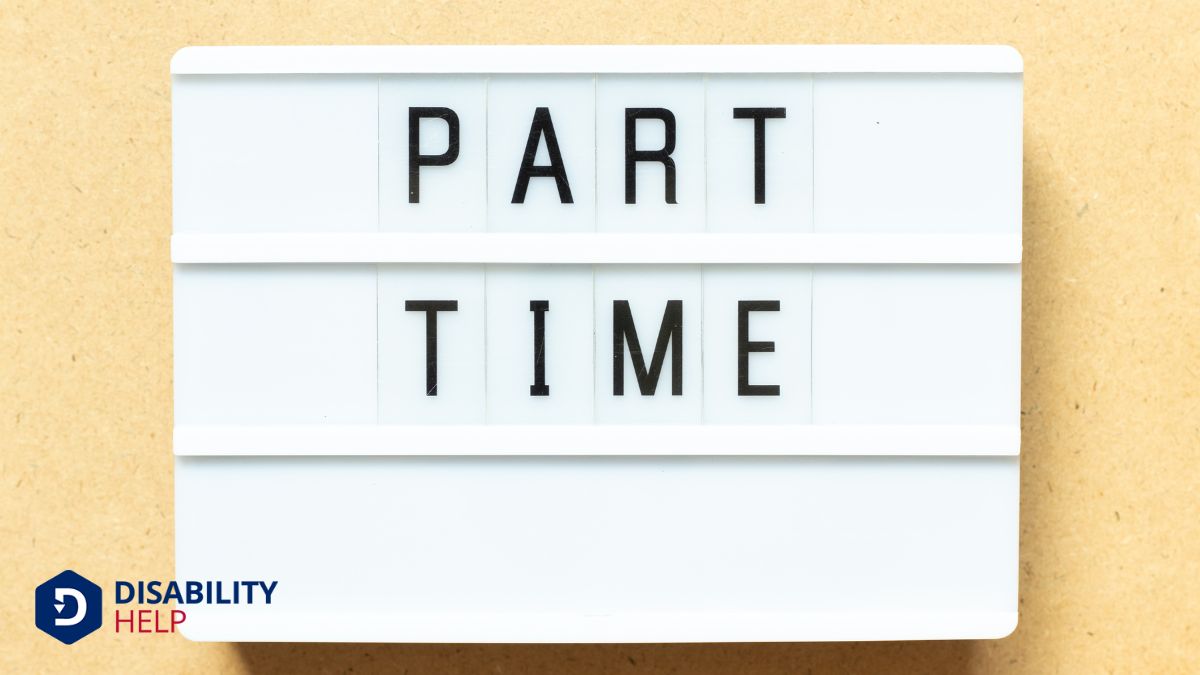When we return to work part-time, our benefits like SSDI and SSI might be impacted. Income from employment can affect the amount and eligibility of these benefits. During the Trial Work Period for SSDI, we can test our ability to work without losing benefits. Earnings reporting is essential to avoid overpayments. Knowing how our benefits interact with work can help us maintain financial stability. To fully grasp adjustments and incentives, let's uncover further details.
Key Takeaways
- SSI benefits may decrease based on part-time earnings, as it is a needs-based program with specific income rules.
- SSDI allows a nine-month Trial Work Period, during which earnings do not affect benefits.
- Exceeding SSDI's earnings limitThe maximum amount an individual can earn while receiving disability benefits without losing eligibi..., $1,470 in 2023, can classify work as substantial gainful activity, impacting benefits.
- Reporting monthly earnings to SSA is mandatory to ensure accurate benefit calculations and avoid overpayments.
- Work incentivesPrograms or policies that encourage individuals with disabilities to enter or remain in the workforc... and exclusions may help maintain benefits while reducing potential financial impacts from part-time work.
Understanding the Types of Benefits You Receive

When we consider returning to work part-time, it's important to first understand the types of benefits we receive. Different benefits such as Supplemental Security Income (SSI), MedicaidA U.S. government program that provides health coverage to eligible low-income individuals, includin..., and others can be impacted by our decision to work part-time.
Each benefit has specific eligibility criteria and rules regarding income and work. For instance, SSI is needs-based, meaning our income and resources directly affect the amount we receive. Working part-time could result in adjustments to our benefits.
Medicaid, on the other hand, might have different thresholds, and maintaining eligibility could depend on our earnings. By understanding these distinctions, we can better navigate the complexities of returning to work.
Let’s make sure we clearly comprehend the benefits we have, so we're prepared for any changes that may occur.
Impact of Part-Time Work on Social Security Disability Insurance (SSDI)
Let's explore how part-time work can affect our Social Security Disability Insurance (SSDI)A U.S. government program that provides financial assistance to individuals who are unable to work d... benefits.
We start with the Trial Work Period, which allows us to test our ability to work without losing benefits.
We'll also need to keep an eye on earnings limits and understand how they might lead to benefit suspension.
Trial Work Period
While considering a return to work, it's important to understand how the Trial Work Period impacts our Social Security Disability InsuranceA form of insurance that provides income to individuals who are unable to work due to a disability. (SSDI).
This period allows us to test our ability to work without losing SSDI benefits. We can work for nine months, not necessarily consecutive, within a rolling 60-month period. During these months, we can earn any amount without affecting our benefits.
Each month we earn over a certain threshold, it's counted as a trial work month. Once we complete nine months, the Social Security Administration (SSA) reviews our situation to determine if we're still eligible for benefits.
The Trial Work Period gives us a safety net, letting us explore work opportunities without immediate financial consequences to our SSDI benefits.
Earnings Limits Impact
Although part-time work can be a viable option for many of us receiving SSDI, it's important to understand how earnings limits affect our benefits.
The Social Security Administration (SSA) sets specific monthly earnings limits that we must adhere to, ensuring our benefits remain intact. For 2023, if we earn over $1,470 monthly, we risk a reduction in benefits.
This threshold is significant because exceeding it may classify our work as substantial gainful activity (SGA), which can impact SSDI eligibility.
Let's keep track of our earnings carefully. Staying below this limit helps maintain our benefits while exploring work opportunities.
Understanding these limits empowers us to make informed decisions about returning to part-time work, balancing financial needs with the security of our SSDI benefits.
Benefit Suspension Rules
Maneuvering part-time work while on SSDI involves understanding not just earnings limits but also the rules around benefit suspension.
If we earn more than the substantial gainful activity (SGA) threshold, our SSDI benefits might be suspended. The SGA for 2023 is set at $1,470 per month for non-blind individuals. It's essential to track our earnings each month to avoid unintentional overages.
However, it's reassuring to know that the Social Security Administration provides a Trial Work Period (TWP). During this time, we can test our ability to work for at least nine months without losing SSDI benefits, regardless of how much we earn.
After the TWP, our benefits could be suspended if earnings exceed the SGA, but they can restart if earnings fall below it again.
How Supplemental Security Income (SSI) Is Affected by Part-Time Employment
When we return to work part-time while receiving Supplemental Security Income (SSI), our earnings can affect the amount of benefits we receive.
Fortunately, there are work incentives designed to help us keep more of our benefits while working.
It's essential that we report our income accurately to avoid any disruptions in our SSI payments.
Earnings Impact on SSI
Balancing part-time work with receiving Supplemental Security Income (SSI) benefits can be tricky, but understanding the rules can help us better navigate this situation.
When we work part-time, our earnings can impact the SSI benefits we receive. The Social Security Administration (SSA) considers part of our earned income when calculating our SSI payment. They apply specific exclusions, like the first $65 of earnings each month and half of the remaining amount.
This means our SSI benefits won't decrease dollar-for-dollar with our earnings. However, as our income increases, our SSI benefits might decrease.
It’s important to report all earnings to the SSA to guarantee we receive the correct benefit amount. By understanding this process, we can make informed decisions about balancing work and benefits.
Work Incentives and SSI
Exploring work incentives can make a significant difference for those of us receiving Supplemental Security Income (SSI) while working part-time. These incentives aim to encourage employment without a drastic reduction in our benefits.
For example, the first $65 of our monthly earnings, plus half of the remaining earnings, don't count toward our SSI calculation. This means we can keep more of our income before seeing a decrease in our SSI benefits.
Additionally, the Plan to Achieve Self-Support (PASS) allows us to set aside money for expenses related to our work goals, further reducing countable income.
Reporting Income Requirements
Understanding work incentives gives us a clearer picture of how to maximize our SSI benefits while working part-time.
When we work, it’s vital to report our income accurately to the Social Security Administration (SSA). They need to know how much we earn to adjust our benefits accordingly.
Let’s remember to report any changes in our work situation, such as starting a new job or a change in hours. This helps avoid overpayments, which we’d have to repay later.
We should submit our pay stubs monthly, either by phone, mail, or online through the mySocialSecurity account.
Keeping records of our earnings is essential to ensure we provide the correct information.
The Role of the Trial Work Period in Returning to Work
When considering a return to work after receiving disability benefitsFinancial assistance provided to individuals who are unable to work due to a disability, such as Soc..., the concept of a Trial Work Period (TWP) becomes vital. It offers us an opportunity to test our ability to work without losing our benefits.
During this period, we can work for nine months (not necessarily consecutive) within a 60-month timeframe, while still receiving full benefits regardless of how much we earn.
It’s important to understand that the TWP is designed to encourage us to explore work possibilities confidently. This period helps us decide if we can handle a regular work routine without the fear of losing our financial support immediately.
Let’s remember that each month we earn over a specific amount counts as one of the nine TWP months, so planning is key.
Reporting Requirements and How They Affect Your Benefits
While managing the shift back to work, it's vital that we comprehend the reporting requirements since they directly impact our benefits.
When we start working part-time, the Social Security Administration (SSA) needs to know about it. Here's what we should do:
- Report Earnings Promptly: We should inform the SSA of our earnings each month. This helps guarantee our benefits are calculated correctly.
- Use Approved Methods: Reporting can be done online via the SSA's website, by phone, or by visiting a local SSA office. Choosing the most convenient method makes the process seamless.
- Keep Accurate Records: It's important to maintain detailed records of hours worked and wages earned. This documentation can help in case of any discrepancies or audits.
Strategies for Balancing Work and Benefits

Balancing work and benefits requires strategic planning to ensure that we maximize our financial situation while maintaining necessary support.
First, let's assess our current benefits and understand how they interact with our part-time income. Knowing thresholds and limits can help us avoid unnecessary reductions. We should communicate with our benefits advisor or caseworker to ensure that we're fully informed.
Next, let's track earnings carefully to avoid exceeding income limits that might impact our benefits. Budgeting is essential; let's allocate our earnings towards expenses that benefits don't cover.
Finally, exploring work incentives within benefit programs can offer additional advantages, like training or transportation support. By staying informed and proactive, we can effectively balance part-time work with the benefits we rely on.
Conclusion
As we've explored, returning to work part-time while receiving benefits involves maneuvering several important factors. Understanding the types of benefits we receive and how part-time work impacts them is essential. We should consider the effects on SSDI and SSI, utilize the trial work period, and make certain we're meeting reporting requirements. By balancing work and benefits, we can make informed decisions that support our financial and personal goals. Let's stay proactive in managing our benefits wisely.






